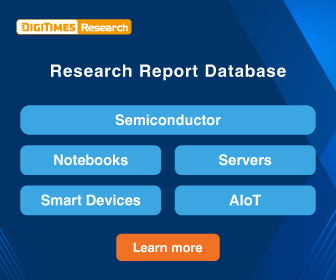Malaysia has steadily developed its outsourced semiconductor assembly and testing (OSAT) industry, with Penang — often called the "Silicon Valley of the East" — at its core. A recent DIGITIMES visit to Penang offers a fresh view of the region's legacy OSAT giants and fast-rising newcomers.
ASE, SPIL double down in Penang as regional OSAT hub rises
ASE Holdings, the world's largest OSAT provider, is expanding its presence in Penang through both ASE Group and its subsidiary Siliconware Precision Industries Co., Ltd. (SPIL). SPIL plans to invest around US$600 million in a new Bandar Cassia facility by 2025, boosting capacity for bumping, flip-chip, and 2.5D packaging. The site is expected to create 3,000 new jobs.
ASE has also launched a fifth facility in the Bayan Lepas Free Industrial Zone, expanding its Malaysian footprint from 1 million to 3.4 million square feet (23 to 78 acres). The move supports the group's shift toward AI-driven smart manufacturing.

ASE's new facility in Malaysia. Credit: DIGITIMES
ASE CEO Tien Wu has called the Penang facility a key step in the company's global roadmap. As demand for advanced chips grows, Southeast Asia is emerging as a strategic semiconductor hub.
With Malaysia positioning itself as a regional semiconductor hub, ASE's new facilities are expected to boost its role in the global value chain and support national economic growth.
Tongfu Microelectronics expands faster than Intel, goes all-in on Penang
Intel announced a US$7 billion plan in 2021 to build its Pelican 3D packaging plant in Penang, featuring 710,000 square feet of cleanroom space. But by 3Q24, the project was paused due to financial headwinds. Contractors remain on-site for basic work, but local interface suppliers told DIGITIMES they are unclear on Intel's next steps.
In contrast, Chinese OSAT giant Tongfu Microelectronics is ramping up operations in Penang, expanding advanced packaging facilities and deepening its collaboration with AMD. Since acquiring AMD's Penang back-end facility, Tongfu has maintained close ties with the US chipmaker through joint venture TF AMD, which is aggressively scaling local capacity.
The expansion has also benefited Taiwanese suppliers like WinWay Technology, which is seeing strong AI-driven demand from AMD. Rival firm Cohu has established a 20,000-square-foot design center in Penang to advance high-speed and modular test technologies.

Tongfu Microelectronics wins major AMD OSAT orders in Southeast Asia. Credit: DIGITIMES
Tongfu expanded its Penang capacity in 2024 and plans to invest up to US$1.2 billion more, targeting chiplet and 2.5D packaging technologies. Flip-chip and other advanced packaging methods remain mainstream in GPU and console markets — TF AMD reportedly handles much of the packaging for Sony's PS5 processors.
Infineon expanded its SiC wafer plant in 2024 and is ramping up back-end capabilities in Malaysia. Micron opened its second back-end plant in 2023 and pledged another US$1 billion to bolster memory packaging. DIGITIMES observed continued construction at its Penang site.

Micron boosts Malaysia investment to expand memory capacity. Credit: DIGITIMES
China-backed AccoTEST emerges as an ATE alternative to Advantest, Teradyne
Japan's Advantest and US-based Teradyne dominate the ATE space, but Chinese contender AccoTEST is gaining ground. Backed by Beijing Huafeng Test and Control Technology, the company opened a manufacturing site in Penang in 2024. Its STS8300 tester has reportedly shipped over 7,000 units globally.
Supply chain sources say AccoTEST targets ATE systems for power semiconductors, including MOSFETs and IGBTs, as well as mixed-signal, analog, and digital ICs used in consumer, automotive, industrial, IoT, and telecom products.
Amid the US–China tech standoff, AccoTEST is one of the few Chinese firms building native ATE platforms, aiming to challenge US and Japanese dominance and support China's self-sufficiency goals.
Reported clients include Huawei's HiSilicon, Shanghai Will Semiconductor, BYD, and Silan Microelectronics.
Inari secures Broadcom loyalty as Penang's local OSAT champion
Among Penang's local OSAT firms, Inari Amertron Berhad stands out. Industry sources call it a de facto satellite facility for Broadcom, with roughly 80% of its orders tied to the US networking chip giant, fueling Inari's rise in Southeast Asia's OSAT landscape.
Inari handles RF front-end module (FEM) testing and packaging for smartphones and wireless gear, according to supply chain sources. As 5G adoption grows, the company has expanded into 5G chip packaging alongside Broadcom.

Inari gets 80% of OSAT orders from Broadcom, which also has a Penang module plant. Credit: DIGITIMES
That said, ASE Holdings' global revenue exceeds Inari's by more than 50-fold. While Inari is regionally strong, ASE remains the industry leader in customer base, scale, and advanced technology.
Inari's main sites are concentrated in Penang, while Broadcom operates module facilities in both Penang and Petaling Jaya. Despite this, Broadcom continues to outsource large-scale OSAT work to Inari, bolstering Penang's back-end semiconductor ecosystem.

Inari has become one of Penang's leading local OSAT providers. Credit: DIGITIMES
Though Penang's semiconductor roots run deep — comparable to Taiwan's — the OSAT segment has long been labor-intensive and scale-driven. DIGITIMES' field reporting confirms Malaysia's ambition to move beyond legacy packaging toward advanced solutions and IC design.
As US–China tech tensions persist, Malaysia's ability to capitalize on its ASEAN position and deep industry clustering could determine whether it emerges as a next-generation semiconductor force.
Article edited by Jack Wu

